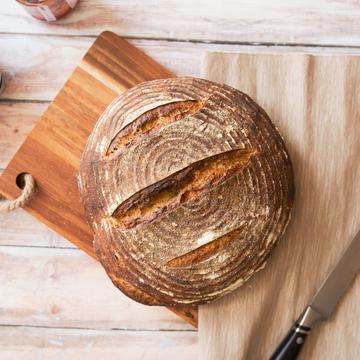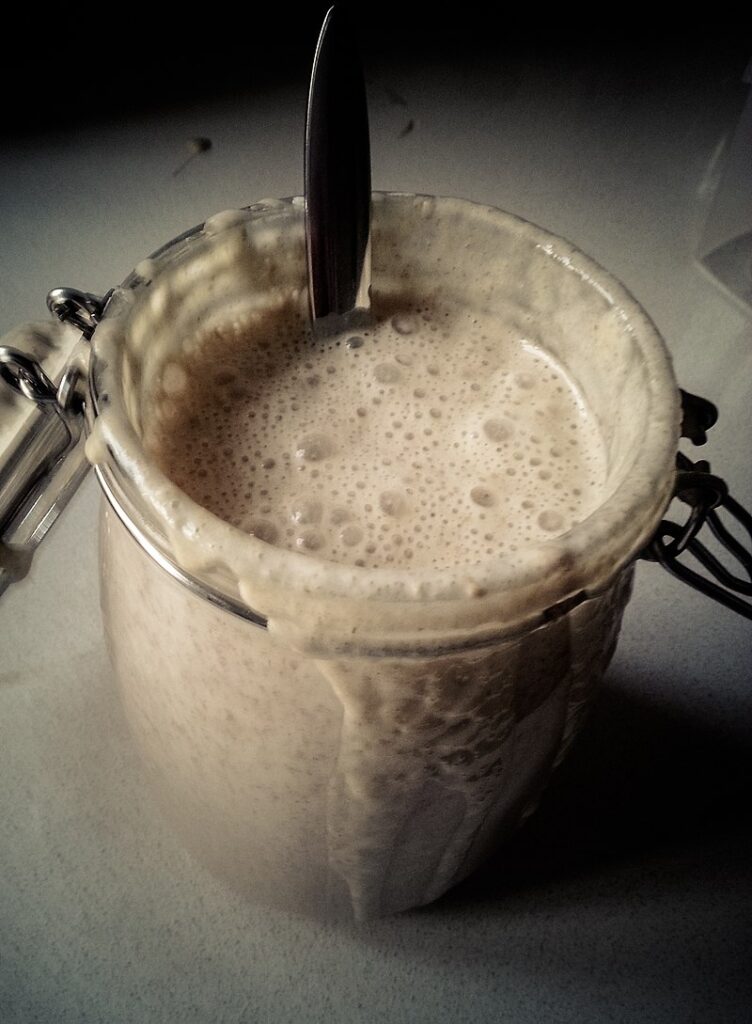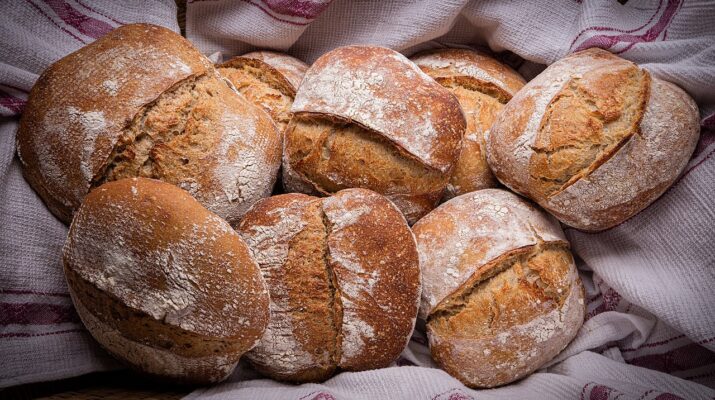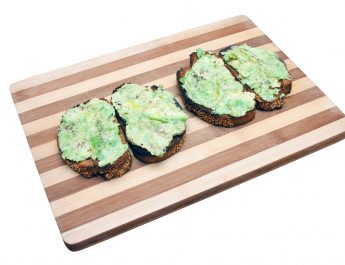Find out how to make a homemade sourdough starter and bake delicious homemade bread exactly the way you want it.
It’s hard to find a bread recipe that is as versatile, healthy and delicious as sourdough. It can be used in many ways – from sandwiches to croutons to croissants! However making your own sourdough takes patience – to make a healthy and strong starter from scratch it needs about 12 days, and then every time you bake a loaf needs at least 12 hours to ferment properly before baking. Of course, there are shortcuts – so read on below to find out
The Good
- 20X cheaper than buying Sourdough bread
- Sourdough is healthier than regular bread
- Baking sourdough is a very attractive skill
- It is fun to do as a couple
The Bad
- Frustrating until you get it right
- You WILL muck up loads of loafs before you get it right
- Must forward plan by 12-24h of when you want the bread
- You may gain several pant sizes due to carb intake
Verdict: Baking your own Sourdough bread is WELL worth the effort
YouKneadSourdough is offering $10 off a Complete sourdough baking kit (delivered to your door) using code: CaptainFI
Like most people, I got into baking bread during the COVID lockdowns, but I found it to be an extremely cost effective food solution. Using a $1 bag of regular flour, I can make two large loaves, three medium loaves or five sourdough rolls. This means it is a fraction of the price of store bought bread, and surprisingly it takes very little time to actually make (most of the time is spent waiting actually!). I am a huge fan of home cooking, keeping my food costs low and brewing my own beverages, so it was only natural that I had to learn how to make sourdough properly.
CaptainFI is reader supported, which means we may be paid when you visit links to partner or featured sites

Introduction to Sourdough
If you’re a bread lover, sourdough is the perfect recipe for you to learn baking with. Sourdough starter is made by combining flour and water and allowing natural yeast to ferment it over time before using it for baking.
Sourdough breads are usually more flavourful than other types of bread because the sourdough starter used to make the bread rise contain lactic acid bacteria that break down starches in the dough to produce carbon dioxide bubbles, which makes them light and airy. This process is what gives sourdough its sour flavor.
In this post I’m going to provide instructions on how to make your own sourdough starter as well as some tips for creating an amazing sourdough loaf for under 40 cents. Enjoy your sourdough journey as you will become an expert sourdough baker in no time and all you really need is flour and water.
Sourdough bread
Sourdough bread is a type of natural yeast-leavened bread that’s typically made with flour, water and sourdough starter. A starter can be made by combining equal amounts (by weight) of flour and water – the ratio will change depending on the kind of dough you’re using it for (wholemeal will require slightly higher hydration ratios as it absorbs more water).
Why you should make your own sourdough, and why it’s worth the time
It’s hard to find a bread recipe that is as versatile, healthy and delicious as sourdough. It can be used in many ways- from sandwiches to croutons to croissants! However making your own starter takes patience since it needs about 12 days, and the baking process can take between 12-24 hours depending on how long you let your dough ferment (the longer you do, the stronger the flavour).
Sourdough bread is good for your gut, and very good for your wallet. It costs me under 50c to make an amazing, delicious, fresh loaf of artisan sourdough – the very same I have seen selling for $10 in bakeries here in Sydney! at 20x cheaper, your damn straight I will be baking them myself. All you need is flour and water! Sure, the “sourdough” you can get from the supermarket is only $5, but it is also not real sourdough as it is usually packed with preservatives and other nasties.
Don’t be fooled by the total preparation time of sourdough recipes though – most of this time is spent waiting, and all in all there is less than 10 minutes worth of work to make the loaf. It is also immensely satisfying.

Wild yeast
Wild yeast is a strain of naturally occurring yeasts that are found in the environment. It can be harvested from fruit, vegetables, flowers, your skin, or even extracted from the air by simply using a piece of bread! These strains of yeast are different than commercial yeast because they create unique flavours that cannot be duplicated by those produced commercially.
The process for using wild yeast for baking sourdough is relatively simple – all you need to do is mix together flour and water, let it sit out overnight so that it can ferment and then feed it up to make a starter.
How do you start a sourdough starter: your very own Sourdough starter recipe
Most sourdough starter requires about 12 days from scratch. This is because to produce a homemade sourdough starter with healthy yeast and bacteria that is strong enough to bake with, you have to grow the bacterial colony using a fermentation process where you discard starter, and then feed the remaining starter with more flour.
You can use the following types of flour
- Unbleached flour
- Grain flour
- all purpose flour
- whole wheat flour (wheat flour)
- Organic flour
- Spelt flour
- Rye flour (to make a rye starter)
Whole grain flours and spelt flours are best, but you really just need glutenous flour and water.
Start by combining equal parts flour and water (or try slightly less water) – 50g of all purpose flour and 40ml of warm tap water will do. Put these in a glass jar and stir into a thick paste. You may add a pinch of table sugar at this point to help feed the yeast, too. Close the lid and leave in a warm spot – for example cover it with a tea towel and leave on a sunny window sill, or alternatively on top of the fridge or similar. You can use whole grain flour or spelt flour to make your sour dough starter, too.
Every day, the mixture must be halved i.e. half is tipped out to ensure a healthy starter (sourdough discard is useful for making pancake batter or dough to make a delicious pizza crust). You must then feed the starter by adding the flour mixture which is equal parts fresh flour and water and the mix is stirred (or “fed”) every day.
After 12 days, you should be seeing a strong starter yeast. Before baking, you need to activate or ‘feed up’ your yeast – add flour and water, mix and leave somewhere warm for a few hours – then you may take out how ever much you need for baking.
After that you can put it into the fridge to slow down production of CO( ) bubbles or use it as needed in your recipe to leaven bread.

If you leave it out of the fridge, you must feed it every day or it will die. You can just leave it in the fridge all week like I do. I take mine out on a Thursday and feed it, then feed again on a Friday so I can start mixing dough Friday night ready for a Saturday morning bake – who doesn’t love fresh sourdough and avocado on a Saturday morning??
Of course, you could totally cheat when making a sourdough starter by just ordering a dry sourdough starter online and then rehydrating and feeding it up in a warm spot.
You will know your starter is ready to bake when it passes the float test – a dollop of your mature sourdough starter should look like pancake batter and float in a cup of water.

Sourdough bread recipes
There are SO many baking recipes out there, but this sourdough recipe is what works for me. I prefer a longer fermentation time to give it a more sour flavor, but you can adjust as you see fit. You can add salt to taste, but as you see the basic two ingredients are just flour and water
- 400g flour
- 300ml water (75% hydration ratio)
- 100 grams active sourdough starter (active starter)
- 5g salt
- Rice flour for dusting (if you want, not necessary)
- Olive oil (for your hands)
Items you will need
- Oven (capable of up to 250 degrees Celsius)
- Dutch oven / Cast iron pot (with lid)
- Banneton (rattan bowl ideally with canvas liner)
- Mixing bowl
- Razor blade or scissors
- Kitchen scales
- Spatula or scraper
- Gladwrap or shower cap
Instructions:
Before using the sourdough starters, ensure the starter is ready by ensuring you feed your starter a few hours beforehand with some all purpose flour (or whole grain flour). Resist the urge to add commercial yeast, as this will spoil the process. Mature sourdough starter will work best.
Mix all ingredients and the active sourdough starter in a bowl roughly – you don’t need to fully combine it. Let it stand for at least 30 minutes
When letting it stand, cover the bowl with glad wrap or shower cap so the bread dough doesn’t dry out.
For four times, every hour, I did 30 seconds of ‘stretching and folding’ where I just wet my hands and then grab the bottom corner of the dough and fold it over to the top of the dough and push it down. You can get away with just one or two of these if you are short of time, but the more the better (helps stretch the gluten and give you that nice, al-dente or spongy feel).
When it is resting remember to cover it – you can use a gladwrap and a rubber band but I find a shower cap is the best.
Let it bench rest – sit for 8 hours or so in a bowl on the counter top.
Take it out and ‘pre shape’ into a ball. You can just put a bit of olive oil on your hands and then cup the dough, and rotate your hands around and down slightly as if to rotate the ball of dough and force the surface of the dough downwards towards the bottom seam of the ball. Let it sit for 30 minutes
Roughly pull it flat then fold it over itself like an envelope (fold sides in and then roll from one end), roll into a ball and shape again just as you did during the pre shape.
Dust with flour and then put it into the proofing bowl upside down (seam up), cover it and put in fridge at least 8 hours. The longer you leave it, the stronger (more sour) the bread will be.
Take out, put into pre heated Dutch oven (seam down) on baking paper, 35 minutes at 250C, then take lid off and finish at 200C for 15-25 minutes depending on size and how golden/brown you want it
Let cool for an hour before slicing
Recipes for using up leftover sourdough (bread pudding, croutons, etc)
First of all, simply slice and freeze your sourdough bread so that it doesn’t go bad. But your kidding yourself if you think it will last that long – I have never had a loaf last more than a few hours!
One way to use up your sourdough is to make bread pudding with it! It’s super easy and tastes amazing. Here are the steps:
* Take a loaf of stale, day-old sourdough (or other) bread and cut into cubes
* Add in some butter or margarine while you’re at it, along with spices like cinnamon & nutmeg if desired
* Pour over milk until all the dry ingredients are covered — usually about three cups will do (you may not need as much for smaller loaves). You can also add vanilla extract which gives an extra depth of flavour.
Then bake at 200C for around 30 minutes – 45 minutes until set through and golden brown on top
Troubleshooting – what to do if your dough doesn’t rise or smells bad
If your dough doesn’t rise or smells bad, there might be something wrong with the starter. Stale flour can also cause this problem – start over and make sure you’re using fresh ingredients for your starter (and that they are at room temperature).
A really sour smell, water on the surface, red or black colour, or visible mould growth is a sign of spoilage of the starter itself. Usually if one batch fails to work out well then so will any following batches until you figure out what went wrong with your starter and fix it.
A common reason why starters go bad or cause bread to not rise properly is because it has been allowed to dry out too much before being refreshed with water and flour. If this happens you may need to pay more attention to your starter – feed it 50:50 flour and water and keep it in a warm place until you can see visible bubbles and it goes fluffy. When a dollop of starter floats in a cup of water, you know it is good to use.
As a last resort you can add a bit of table sugar to your starter jar and close the lid to attempt to feed up the lactic acid producing bacterial yeast – but you must train the yeast to eat the flour and not just sugar or it won’t rise the bread.
Conclusion
If you want to make your own sourdough, it is a lot of fun but it also takes patience and time. Plus, if you’re like me then the COVID lockdowns taught you how important a good food solution can be for survival! I found baking bread was one of my favourite ways to fill up on calories while still being able to cook with minimal ingredients. Sourdough bread is one of the most delicious and cost effective meal solutions.
It’s hard not to get excited about seeing those loaves come out of the oven after spending 12 hours fermenting with that magical starter dough! With a Sourdough baking Kit you get all the tools – including detailed instructions needed for making loaves from scratch. You don’t need any special expertise either; just follow the simple steps and have a lot of fun in the process.
Check out my Instagram as I usually post my latest creations to the feed or stories.
Verdict: Baking your own Sourdough bread is WELL worth the effort
YouKneadSourdough is offering $10 off a Complete sourdough baking kit (delivered to your door) using discount code: CaptainFI

Frequently Asked Questions about sourdough
Just in case the above hasn’t answered your questions, check out some frequently asked questions about sourdough below.
What is sourdough starter?
Sourdough starter is a mixture of flour and water that has been allowed to ferment naturally. It’s usually made up of equal parts all purpose or bread flour, and about the same volume of warmish filtered water, which have been combined in an airtight container such as a glass bowl with lid for 24 hours then left on your countertop at room temperature until it goes bubbly; you can also make this by combining milk, yeast and flour – if using fresh milk remember to heat it first so the enzymes don’t curdle it into clumps but keep them alive! You will need to feed this starter every day since
How do I maintain my sourdough starter?
You’ll need to feed this starter every day since it will eventually run out of food and die; you can use whatever type flour you like but make sure it has gluten in order to get good rising action going; once activated by feeding, scoop off some starter from the top and mix it with whatever flour you like, then store the rest in a clean glass container to keep it alive
Why is sourdough bread good for you?
Surprisingly, sourdough bread is really good for you! Although the yeast in most bread is generally active and alive (especially when it’s fresh), starter doughs like sourdough are even better as they have a much lower content of phytic acid. Phytates bind to minerals that would otherwise be absorbed by your body; this binding process reduces mineral absorption so if you’re not eating very many fortified foods then an unrefined flour will provide back some of what’s lost
How do I use my starter?
You can either start with adding all the dry ingredients together before introducing any liquids or vice versa – whichever way you choose make sure to mix them well until there aren’t any lumps left over and then let it rest as per the recipe instructions above
Is sourdough gluten free?
Using regular wheat flour as the starter can lead to a gluten-containing sourdough. If you’re looking for a gluten free alternative then try swapping it out with grains like buckwheat, spelt, millet or quinoa.
Is sourdough as bad as white bread?
A lot of sourdough breads are made with unrefined flour which can help prevent mineral deficiencies. So no, they are not as bad as white bread. To make it healthier opt for whole meal flour (which includes the wheat germ) and add a variety of seeds and beans such as chia, flax, soy and pepitas.
How long does it take to bake sourdough?
If you’re baking a loaf of sourdough bread then it will take about an hour and the resulting texture is denser than that of white flour.
Sourdough starter: what’s in it?
The ingredients for making a starter are usually just water, rye or wholemeal flour and yeast. You need to cover with foil so no oxygen can get into the mixture which might make it go bad. As long as there isn’t any lumps left over from stirring they leave them to rest/rise before using again when needed (see recipe instructions).
Will my sourdough starter survive if I don’t keep feeding it after use?
It depends on how much liquid and flour was used during last feeding but most likely not as the yeast will eventually consume all of the nutrients after a few days if left out at room temperature.
How long can you keep sourdough starter in the fridge?
Sourdough starter can be preserved in the fridge for a week to make it easier to revive and use again.
What’s so special about sourdough?
The yeast used is less likely to produce many of the impurities which are usually found in commercial yeasts, making the resulting product more rich and flavourful. The method of using wheat that has been grown without pesticides helps this process as well – there may not even need any additional preservative added if you’re lucky. This leads us on nicely into “How do I keep my sourdough starter alive?”…
What is the point of a sourdough starter?
The starter is a starter culture that provides yeast and lactobacilli to convert the flour’s starch into sugars, improving flavor.
What do I need for sourdough?
Flour (ideally organic or unprocessed), water, salt and time. The sourdough bread you end up with will be unique in flavour because of this process depending on what other ingredients are added such as seeds etc. It also means that it is healthier than most commercial breads which have additives like preservatives and chemicals like chlorine dioxide used during processing – not something you’ll find in your home made loaf!
Captain FI is a Retired Pilot who lives in Adelaide, South Australia. He is passionate about Financial Independence and writes about Personal Finance and his journey to reach FI at 29, allowing him to retire at 30.









You’re using regular plain flour for this? I’ve only ever used bread flour. I wonder if there’s much difference. The high protein of bread flour is meant to give it more rise, I think.
It’s worth mentioning some uses for the sourdough starter discard too: crumpets, banana bread, pancakes, cookies etc etc…don’t let it go to waste!
Hey Will – yep just plain old regular flour, $1 per bag at any supermarket. I haven’t tried the high protein bread flour but I’ve also heard its supposed to be better. Great ideas for the starter discard, I’ve made pancakes with them and its been great – Better not to waste any potential ingredients!